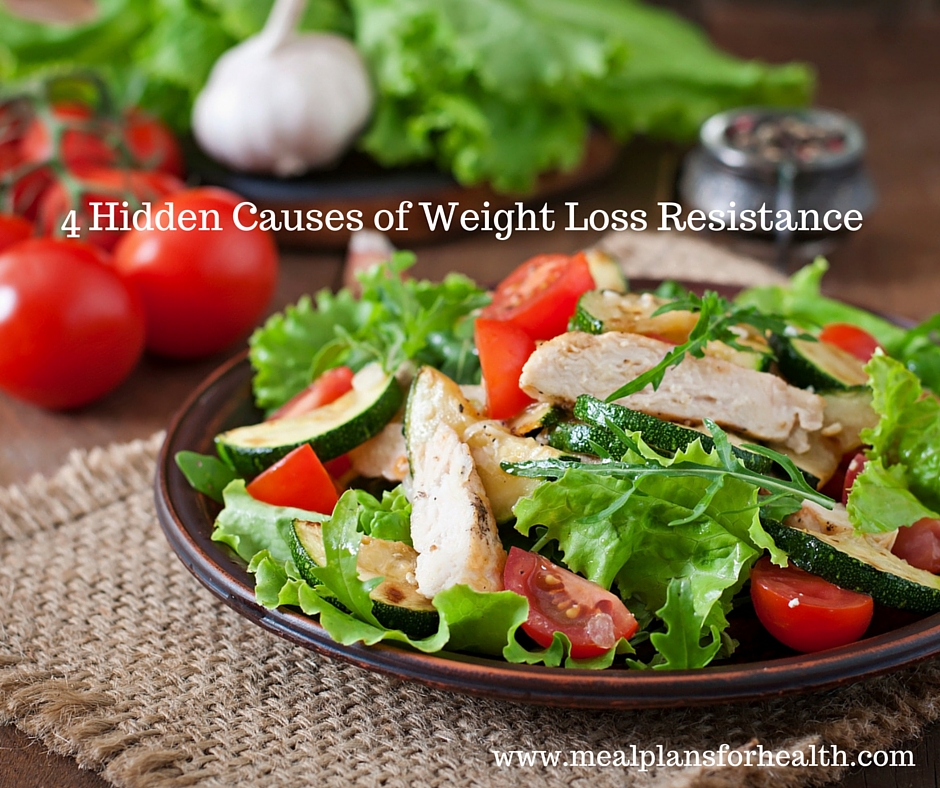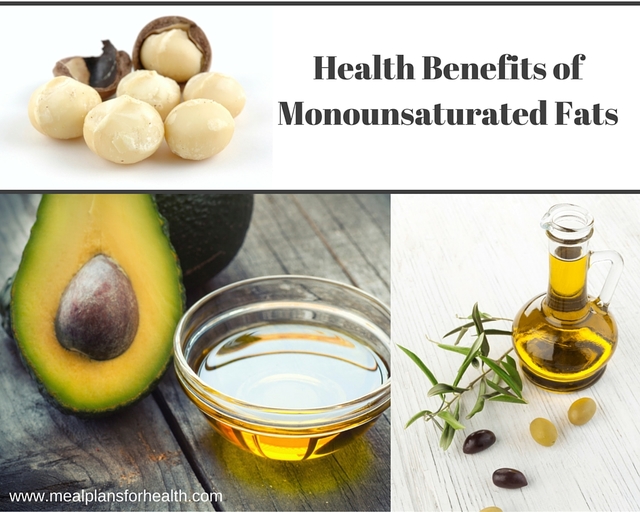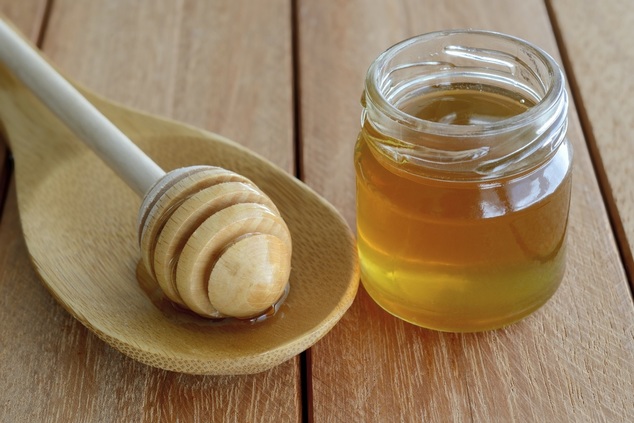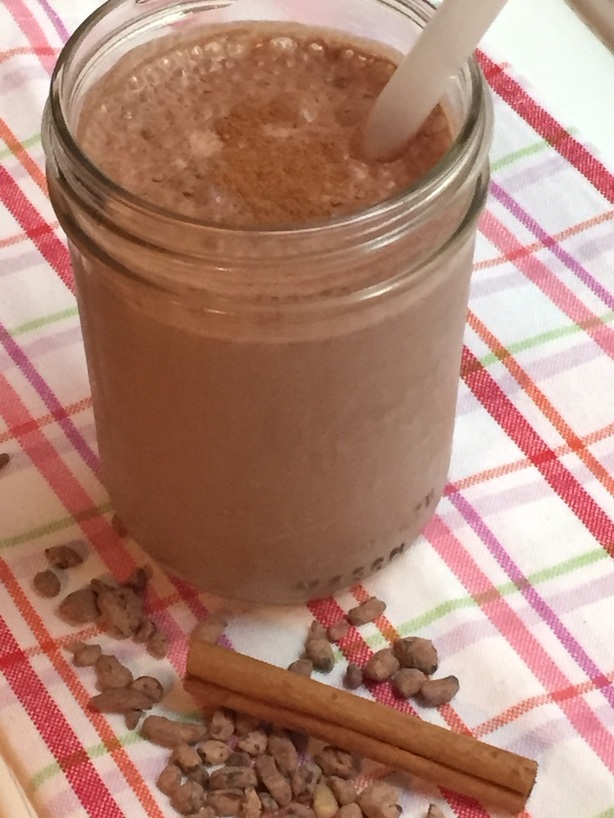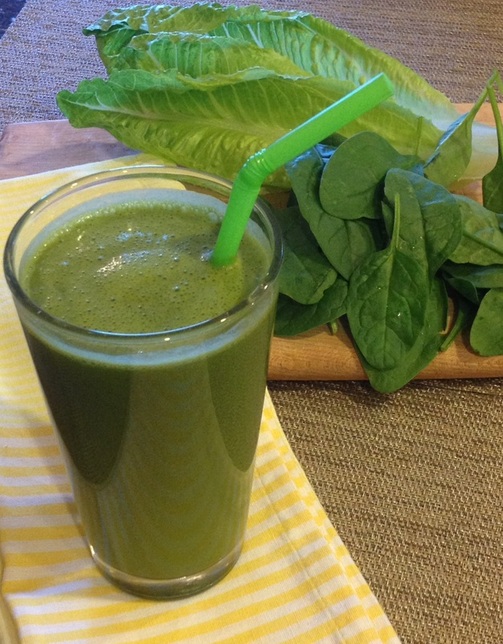|
This common hormonal imbalance affects both women and men and can leave you feeling blue, overweight, and unable to sleep. Estrogen dominance occurs when estrogen levels are too high relative to other hormones, especially progesterone. This can occur in the presence of excess estrogen or when there are deficient progesterone levels to counterbalance estrogen.
These two hormones need the presence of each other in order to correctly perform their individual roles and act like a system of checks and balances to one and another. In general progesterone calms the effects of estrogen and keeps it in check. But when their delicate balance becomes skewed, estrogen can overstimulate the brain and body and you can experience a wide variety of mild to serious symptoms including... Signs of Estrogen Dominance:
Causes of Estrogen Dominance:
Conventional medicine uses a narrow minded approach to correct estrogen dominance, typically using Hormone Replacement Therapy, birth control, or IUD's to tame estrogen levels. The problem with this approach is that it only treats the test results - low or imbalanced hormones, by replacing them. BUT it doesn't actually address the causes of estrogen dominance at all! Particularly if the person cannot metabolize excess estrogens, this type of treatment approach is like adding fuel to the fire. I was someone who experienced this personally - I spent my teens in and out of several endocrinologists and gynecologists office suffering from endometriosis, PCOS, depression and difficulty losing weight. And then spent my twenties in fertility clinics trying without success to get pregnant. Now that I understand what was really going on with my body chemistry and metabolism at that time, I also understand why none of the hormone replacement or fertility treatments were effective. My body was suffering from a chronic illness that was taxing my adrenals and throwing my metabolism out of balance, leaving my progesterone levels significantly depleted. Plus my liver detoxification pathways were overloaded because of my hidden, chronic infections and I was not metabolizing all the excess estrogens I was being exposed to in my diet and lifestyle. Using the hormone shots and tablets never worked because they just made the imbalances worse! (Wish I could have discovered this information 8 years, 4 doctors, and thousands of dollars ago!!) It wasn't until I got off the synthetic hormones, addressed my chronic candida infection, and made big changes in my diet and lifestyle that I started to lose the extra 20 pounds I had carried my whole life. And after being diagnosed with Chronic Lyme Disease and early onset menopause in 2013, I've made it my personal mission to become an expert on balancing hormones naturally and I practice what I preach everyday! As a Functional Nutritionist, my goal is to help my clients identify the specific metabolic and chemical imbalances that are unique to them using functional nutrition labs. This allows me to develop a customized diet and lifestyle protocol to correct their specific imbalances and help them meet their health goals. Here are some of my basic tips to correct estrogen dominance naturally... How to Correct Estrogen Dominance:
If this blog has resonated with you, I offer a FREE 20-MINUTE PHONE CONSULTATION, where I will review your health history and give you some recommendations on how to balance your hormones naturally. You can also learn more about how you can work with me by viewing our programs page. ~Billie DISCLAIMER: MEAL PLANS FOR HEALTH DOES NOT PROVIDE MEDICAL ADVICE. Meal Plans for Health is designed and intended for educational and informational use only. Always seek the advice of your physician or other health care provider with any questions or concerns you may have regarding your health.
0 Comments
Weight loss resistance is the inability to lose weight despite eating healthy and exercising regularly. Are you someone who lives at the gym and counts your calories only to feel defeated on the scale and deprived in the kitchen? You are not alone and its not your fault. Weight loss is much more than just calories in vs. calories out - there are a number of variables that can affect weight loss.
Try to think of your metabolism not as a calculator, but rather like a balancing scale or see-saw - everything has to be in balance in order for the see-saw to work properly, right?! This is why a caloric deficit is not enough, your body ALSO has to be in a metabolic balance or proper hormonal balance in order to drop those extra pounds as well. And if its not in proper balance, there is no amount of gym time that will make that scale budge. Plus the bad news is that hormones get out of balance very easily, especially under chronic stress of any type, since they are affected by and respond to every other system in body. When there is a stressor or small change in the digestive or nervous system for example, this sends a message to our endocrine system and our metabolism makes an adjustment in hormone secretion in order to communicate to the other body systems to compensate for this change or stressor. All of these communications effect the way we feel especially in the area of energy, cravings, and the ability to burn fat instead of store it. As a Functional Diagnostic Nutrition® Practitioner, I'm always looking for the root cause of my clients health complaints. So when someone comes to me who is struggling to lose weight despite doing all the right things, my goal is to help them identify the hidden, underlying causes that are keeping them from meeting their goals. What I see in my practice is that when we work to identify and resolve these hidden imbalances, the pounds start to come off with ease. This is information everyone should understand, so in today's What's That?! Wednesday post I'm sharing the top 4 most common hidden causes of weight loss resistance I see and what to do about them. 4 Hidden Causes of Weight Loss Resistance:
DISCLAIMER: MEAL PLANS FOR HEALTH DOES NOT PROVIDE MEDICAL ADVICE. Meal Plans for Health is designed and intended for educational and informational use only. Always seek the advice of your physician or other health care provider with any questions or concerns you may have regarding your health. Unlike saturated fats, there is not much controversy around the health benefits of monounsaturated fats. Research shows that populations that consume high amounts of monounsaturated fats, like Greece and Italy, have the lowest heart disease rates in the world. This is why many cardiologists have recommended the "Mediterranean diet" to their patients for several years now in order to reduce the risk of heart disease. In this week's What's That?! Wednesday post, we share the benefits of these healthy fats that go beyond an improved cardiovascular profile.
Health Benefits of Monounsaturated Fats:
Foods Highest in Monounsaturated Fats:
Other nuts like almonds and cashews also have some monounsaturated fats, but the best and healthiest sources are those listed above. I recommend 3-7 servings of total fat per day - monounsaturated, saturated, and omega 3 & 6 fats all combined. You want to get a little of each kind of fat into your diet each day. You may also want to read our previous posts on healthy fats: Omega-3 & Omega-6 Fats for an Anti-Inflammatory Diet 4 Sources of Healthy Saturated Fat Hope you found this helpful and thanks for tuning in! ~Billie This week's What's That?! Wednesday post is the third in our series on the topic of sugar. With so much contradicting information out there, it can be difficult to weed through the fiction and understand what sweet foods are safe or at least acceptable in small quantities in our diets.
I can tell you from my own experience and from working with my clients on sugar addiction, the answer to this question will vary significantly from person to person. Keep in mind each person has their own unique biochemistry and therefore, our bodies will each respond in slightly different ways to different types and sources of sugar - even "natural" sugars. One sensible way that everyone can add a touch of sweet to your diet is through eating some low-glycemic fruits and vegetables that are naturally sweet. Try organic berries, apples, bananas, goji berries, raw coconut, cacoa, carrots, sweet potatoes, squashes like pumpkin or butternut, or some fresh, organic corn. A good serving size is 1/2 cup of low-glycemic fruits each day paired with some protein, fiber, and/or fat to help slow down your body's sugar response and keep additional cravings for more fruit at bay. Examples: apple slices with raw almond butter, berries in a smoothie with an avocado and/or some plant based protein powder, 1/2 of a sweet potato with some grass-fed ghee or coconut oil, then sprinkled with cinnamon, or try our Banana Protein Pancakes. When you do decide to eat some sugar outside of these sources, we recommend that you go with a natural sugar choice and stick to only one serving. Avoid products like cane sugar, brown sugar, and high fructose corn syrup that have been highly processed and refined and contain toxic, GMO ingredients that can drive up inflammation. Choose something that is organic, similar to its natural form, and minimally processed. Here are our top 4 recommendations that meet those criteria best in our opinion... 4 Natural Sweeteners We Recommend:
Also, if you missed the first two weeks of this series on sugar, check out our posts: 10 Tips to Get Rid of Sugar Cravings and 6 Reasons to Avoid Artificial Sweeteners to get caught up! If you liked this blog, you may also like our new eBook, 10 Day Sugar Detox Diet, over 30 recipes that are low in carbs and sugar free plus 2 (5-day) meal plans with make-ahead tips and grocery shopping lists to save you time! Stay tuned for next week when we cover: 5 Sources of Hidden Sugar in Your Diet. Until then, take care friends! ~Billie References: 1. Department of Nutrition, University of California, Davis, March 2003 2. BR Med J: Clinical Res. Ed, June 1985 3. Department of Applied Nutrition, Defense Food Research Laboratory, March 2013. 4. European Journal of Microbiology and Immunology, December 2015.  One of the most common things I hear from the clients I work with is, "I have such strong cravings for sugar and carbohydrates." or "...if I could just get rid of these sugar cravings, I think I could follow through on my healthy eating plan." If this resonates with you, you are not alone. In fact research shows that the average American eats between 3 and 5 pounds of sugar each WEEK! Holy cow! Back in the 1800's, people would eat only 10 pounds of sugar a YEAR! The USDA estimates that most of this sugar comes from processed and pre-packaged foods that contain refined sugar as well as sugar loaded beverages like: soda, fruit juice, cakes, cookies, and candy. A study in the American Journal of Clinical Nutrition proved that the refined sugar found in these foods was just as addictive as cocaine or heroin. When you eat sugar, your brain releases tryptophan, a precursor to serotonin, which is a neurotransmitter that acts as an anti-depressant and makes you feel good and happy. But that feeling only lasts a little while until the body crashes from the sugar high. So in order to increase serotonin and help you feel better again, your body signals cravings for MORE sugar! This vicious cycle is not your fault, these foods are crazy addictive, but that doesn't mean that you have to stay on this crazy sugar ride forever. There are some simple steps you can take to get rid of this addiction, check out this week's What's That?! Wednesday post for... Top 10 Tips to Get Rid of Sugar Cravings:
If you found this post helpful, stay tuned next week when our new eBook, 10 Day Sugar Detox Diet, goes on sale Wednesday, January 27th! This book is packed with over 30 real food, sugar free recipes that you and your family will love! I've even included two (5-day) meals plans with shopping lists to help you incorporate the recipes into your daily life with ease! I really love how this eBook turned out and I know you will love it as well! You can even enter to win 1 of 4 free 10 Day Sugar Detox Diet eBoooks that we will be giving away to our community next week. Click here to learn more and enter to win! Thanks for tuning in and I look forward to connecting with you next week! ~Billie 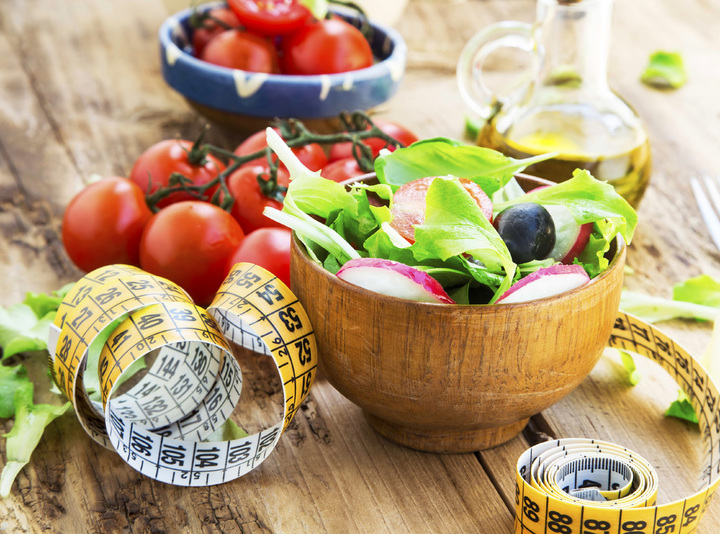 These days, you often hear the words, "Cleanse" and "Detox" in relation to diet, health, and weight loss - there seems to be a new detox diet that hits the market every month. So in today's What's that?! Wednesday post, we talk about what detox diets are safest and most effective as well some of the benefits you may feel after detoxification. We are also offering a Special Sale Price on our 4 Week Detox Diet now through Sunday 1/3! What is a Detox Diet? A detox diet is a short term diet focused on cleansing the body to remove toxic environmental and dietary substances. These diets emphasize foods that provide vitamins, nutrients and antioxidants that the body needs for detoxification. The foods consumed in a detox diet are high in fiber and water content and help draw out and eliminate toxins from your body. These diets also focus on refraining from foods that can impede this process like refined flours, sugars, and processed foods, as well as dairy and grains. How Do Toxins Accumulate in Your Body? A continuously growing amount of research indicates that we ingest chemicals daily through food, water, and air and that some of these chemicals get deposited in fat cells in our bodies. Common environmental toxins include pesticides, antibiotics and hormones in food, as well as the chemicals from food packaging, household cleaners & detergents, food additives, heavy metals, pollution, prescription and recreational drugs, and cigarette smoke. These toxins get deposited in our fat cells and produce excess build-up that our bodies are no longer naturally able to eliminate on their own. This 'toxic load' makes our immune system work overtime which can lead to illness, disease, hormonal imbalances, and nutritional deficiencies - most commonly, weight loss resistance, digestive irregularity (especially constipation), weakened immune system, low energy, trouble sleeping, and mental sluggishness. What are the Benefits of a Detox Diet?
Some detox diets are based on fasting, juicing alone, or replacing 2 or more meals with a protein shake. These types of diets can be difficult for most people to stick to, but more importantly, they lack enough nutrients to support the body through the detoxifying process. If you are considering a detox diet, we generally recommend one that includes a large amount and wide variety of fresh vegetables and clean proteins to keep you feeling full and to give your body the energy and nutrients that it needs to detox, repair, and rebuild. Our Detoxifcation & Cleansing Programs: If you're looking to start the year with a simple, effective cleanse that includes easy and delicious recipes, shopping lists, and step by step instructions check out the details of our Nutritional Cleanse & Detox Diet Programs - On Sale now through Sunday 1/3/2016! All you need is a blender and a willingness to spend 40-65 minutes total in the kitchen each day. We take care of the weekly eating plan including breakfast, lunch, snacks, and dinner and give you weekly shopping lists along with a plan and the proper support to make sure you see results! Both of us have personally been through detoxification and elimination diets and based on our experience and our training have created a program that is both effective and easy to follow. We've taken many clients through this diet with rave reviews and success stories...check out our testimonials to learn more and consider joining us today! Happy Healing! ~Billie and Jen Are you someone who struggles with keeping the weight off even when you are religiously following a low carb diet and excising like a crazy person?! You know who you are - those of you who get up at all hours of the morning to get your long, calorie burning runs and workouts in, count each and every calorie that hits your mouth, and work your butt off only to see the scale move only one pound a month?! That used to be me too!
If your scale is stuck and you are feeling frustrated and confused, you are not alone and this week's What's That?! Wednesday post is a must read for you. We find that weight loss resistance is very common with women especially since our hormonal systems are so much more complicated than men's. So what is weight loss resistance? Weight loss resistance is essentially the inability to lose weight even when your "caloric output" is higher than your "caloric input" or you are burning more calories than you are taking in but still not losing weight. This is when the more traditional dietary rule of "calories in vs. calories out" fails and a more functional medicine approach comes into play. This approach focuses on hormones and the metabolic imbalances that occur when one or more hormones is out of balance. It's actually your hormones that govern nearly all aspects of fat loss, from where you store it to how much you store, to your cravings and even your addictive patterns with food. These five tips will help you begin to turn on your "fat burning hormones" and turn off your "fat storage hormones" and may help you begin to lose weight again. 5 Tips to Boost Metabolism:
BONUS TIP: Make some time for personal care and relaxation. - Stress can be a huge contributor to metabolic and hormonal imbalances - it can increase your cortisol levels significantly and signal your body to store fat instead of burn it. Schedule at least 3 rest and relaxation activities each week for yourself and guard that time with your life! Rest and relaxation activities include daily mediation, yoga, pilates, a leisurely nature walk or dog walk, a relaxing detox bath (click here for detox bath recipes), a movie night at home curled up on the couch, getting a massage or spa treatment, or anything that makes you feel calm, happy and relaxed. If you want to learn more about how to shift your metabolism back into balance and get that scale moving in the right direction for good, take a peek at our Metabolic Recovery Program. Perfect for women over the age of 35 who are struggling with maintaining a healthy weight and energy level or have hormonal dysfunction. We also offer a FREE 15 minute phone consultation, just contact us here to set one up and get started on your health goals today. We look forward to helping you master your metabolism and your scale and meet your wellness goals! ~Billie & Jen Cravings often mean that your body is lacking in something that it needs - whether that be nutrients, water, or even emotional balance. Rather than "will powering" you way through every craving - which can lead to binge eating and overeating down the line, why not try giving your body a small, balanced snack that is high in protein and low in sugar and carbs?!
This shake is best used as a snack in between meals when cravings hit, as small meal replacement right after a workout, or as a small dessert after a light meal (200-250 calories) to keep your blood sugar stable and your energy levels up as well as give you a protein boost. PLUS...raw cocoa or cacao nibs are actually both great appetite suppressors to help cut those cravings down which is why they are the star in this recipe along with another healing food, cinnamon. Cinnamon is known to reduce blood sugar and insulin response and will help keep your energy level even and keep cravings at bay. A stable blood sugar also contributes to your body's ability to burn fat and build muscle. Check out our blog, What's the Difference Between Cocoa and Cacao to learn more about the health benefits of cocoa and cacao. Controlling the ingredients and the nutritional profile of this shake is the most important thing to keep in mind. To do this, you must choose a plant based protein powder that meets the right criteria. Look for one that is GMO free, allergen free, under 10 grams of sugar and over 20 grams of protein. Check out our blog, How to Choose a Protein Powder to help you navigate the health food store and make a choice that will assist you to meet your goals and not sabotage them. "Kick Your Cravings" Chocolate Shake (PRINT RECIPE) Serves 2 Ingredients: 3 cups unsweetened vanilla almond milk, almond milk or coconut milk 2 scoops vanilla protein powder* 2 tablespoons raw, organic cocoa powder or cacao nibs 1 teaspoon ground cinnamon Large handful of ice cubes Directions:
Give it a try and let us know what you think! If you are looking for more support and nutritional know-how to help you beat the vicious cycle of cravings and rock your health goals, check out our Nutritional Coaching Program. We would be honored to support you towards meeting your goals. ~Billie *Choose a brand that is gluten, dairy, and soy free and has more than 20 grams protein and less than 10 grams sugar. I use Plant Fusion Brand (Vanilla Bean) it has 21 grams of protein and only 4 grams of sugar/carbs. 3 Big "Fat" Suggestions: Why You Should Focus on the Types of Fat You Eat & Not the Amount8/26/2014 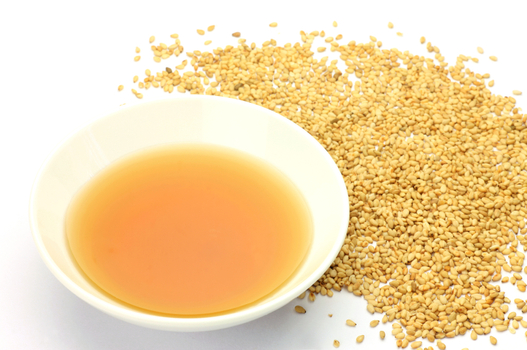 There is a common misconception that fat is the enemy when it comes to weight loss and overall health, but in reality your body needs fat for energy, to maintain healthy cell membranes, to support a healthy immune system, to absorb essential fat soluble vitamins like A, D, E, & K, to maintain a healthy weight, and to support a variety of other everyday body functions. In fact, dozens of studies show that low-fat diets are no better for your health for most people than moderate or high fat diets, and may even be worse for many people. Scientists agree that including adequate amounts of healthy fats in your diet is monumentally important to maintaining good health. So, when it comes to including fat in your diet, we suggest you focus you on the type of fats and not the amount of fat you consume which is why we've devoted our weekly What's That?! Wednesday post to these... 3 Big "Fat" Suggestions:
Be sure to include a little fat at every meal. For example, breakfast can include a green smoothie with hemp seeds or nut butter. Try our Chocolate Peanut Butter Smoothie or our Chocolate Maca Chia Breakfast Pudding. Lunch can include a mixed green salad with walnut, olive oil, or flaxseed oil as part of the salad dressing and some fresh sliced avocado- try our Spring Pea Salad with Roasted Fennel and Chickpeas. For dinner, you can cook your food in coconut oil, include a high quality organic meat or wild caught seafood, or add other healthy fat ingredients like nut butters or raw nuts - try our Cucumber & Carrot Noodle Salad with Peanut Dressing, our Asian Walnut Lettuce Wraps, or our Summer Corn Fritters with Wild Smoked Salmon. Hope these big fat tips have been informative to you...as always feel free to comment below or contact us directly with questions, to work with us one on one, or just to add your thoughts. Wishing you good health! ~Billie & Jennifer 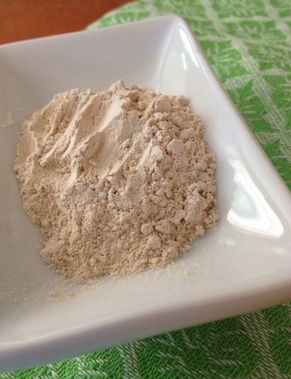 Maca has been used as a food and medicine staple in the Peruvian Andres for thousands of years but more recently has made a name for itself as an energizing superfood! This root from the potato family is commonly available in the U.S. in dried powder form at all health food stores and some regular grocery stores. Maca is nearly 10% protein and contains 20 amino acids; it's also packed with fiber, iron, and 21% of your daily allowance for vitamin E. Here are some other reasons to think about incorporating maca into your diet: 1. Boosts energy and endurance Do you feel tired often, even after you get a decent night's sleep? Most of us do these days because life is just super busy and seems to never slow down. Maca offers a non-caffeinated energy boost that gently stimulates the thyroid adrenal glands to give you a natural feeling of energy without a caffeine crash later in the day. 2. Helps relieve symptoms of PMS and menopause Maca works with the endocrine system to stimulate and nourish the hypothalamus and the pituitary glands which are the "master glands" that regulate thyroid, adrenal, pancreatic, ovarian, and testicular function. It is thought to work as an adaptogen assisting the body to either regulate hormone production upward or downward depending on the body's individual needs. Because of this, Maca has been known to relieve symptoms of PMS and menopause including pelvic pain, cramps, and hot flashes. There are several types of maca, but yellow maca has shown to have the best results in this category for women. 3. Increases libido Because maca helps to balance hormones naturally, many people also experience a nice boost in libido. It can help to promote sexual function in both men and women and has been described as an aphrodisiac by many. Black maca has shown to be particularly effective for men's fertility as it can help to increase sperm production and motility. 4. Helps to stabilize mood and combat depression Yet another benefit of a happily nourished and well functioning endocrine system is a stable mood. As maca helps to balance your hormones, you may also notice that it can help to stabilize your mood and decrease feelings of depression and anxiety. 5. Improves skin health Maca is packed with vitamin E which is a key nutrient for strong immunity and healthy skin and eyes. Getting the right amount of vitamin E can help to protect skin from damage and help to clear acne and blemishes. Maca powder has a slightly "malty" taste and I prefer it stirred into puddings or added to my morning smoothie. Try our Chocolate-Maca Chia Pudding or add it into your morning green smoothie. Maca can very stimulating for some, so start small with a small dose...try 1/2 teaspoon once daily with breakfast. A Few Things To Keep In Mind**: 1. Always consult with your physician before adding any new supplement.This includes maca. 2. Do not add maca to your diet if you have high blood pressure, liver issues, or a hormone dependent cancer like breast or prostate cancer or if you are pregnant or nursing. 3. Do not add maca to hot food, as it will lose it's benefits. 4. Start with a small amount of maca until you know how it will affect you. I recommend 1/2 teaspoon every other day, always in the first half of the day. You can work up to 2 teaspoons per day but most people find that 1/2 to 1 teaspoon a day or even every few days is plenty. 5. If you find maca to beneficial to you and begin to use it on a regular basis, I recommend taking 2 days off each week so that you don't get overstimulated or have any adverse affects. So take it Monday through Friday and then take Saturday and Sunday off. I've been using maca powder consistently now for about 4 weeks as part of my adrenal recovery treatment and I've personally experienced several of these benefits. ~Billie **As with adding any new supplement to your diet, you should always consult your physician and/or work directly with a licensed health care provider. Maca root is not recommended for kids, pregnant women, anyone with a hormone dependent cancer, or women in hormone replacement therapy unless otherwise directed by a treating physician.  We get asked ALL THE TIME why organic foods are important, and we totally understand why. Buying everything you can organic will typically inflate your grocery bill by at least 20%, and sometimes that can be hard on the budget. We both understand budget constraints first hand, but we still emphatically recommend that you purchase as much of your shopping list as you can find as organic, and here's why: 1. Pesticides: Organic foods do not contain chemical pesticides. There are over 400 varieties of chemicals typically used to kill bugs on plants on conventional farms. Let's be clear--these chemicals are designed to kill things and there is simply no way that having them in your body is going to do anything good for you. They don't all wash off when you get them home, and kids are especially sensitive to them. Pesticides have been linked to asthma, cancer, precocious puberty and breast cancer. Yuck. On your produce, you have direct pesticide exposure and any non-organic meat or farmed seafood comes from animals that eat massive amounts of produce that have been doused in the stuff. Those toxins don't get easily flushed out of an animals system, so they build up and are even more potent in meat, seafood and dairy than they are on your apples or spinach. YUCK. 2. Antibiotics: Animals that are raised organically are not given any antibiotics or genetically modified vaccines. Conventionally raised animals are given some or all of these things to keep them healthy in some pretty awful living conditions where they would naturally get sick. Remember when we talked above about pesticides storing up in animal tissues? Same thing goes for antibiotics here. If you've heard about antibiotic resistance in humans, this is where it's coming from--you get low level doses of antibiotics in virtually all of your non-organic meat and dairy and farmed seafood, so your body adapts to them and then can't respond to regular antibiotics when you really need them. 3. Hormones: You also have to be very careful of the hormones that are given to animals raised conventionally. Why do you ask? Well, first, they tend to overload them with growth factor and other hormones to make them grown bigger and stronger (makes sense, right?!..more meat, more money). The animal's body cannot properly process all these extra and unnecessary hormones and so they get stored in the tissues, which we end up consuming. The big problem is that these hormones look and act similar to the natural hormones our body produces; this can create an improper balance of hormones and throw off communication to help the body get back into balance naturally. Studies have linked hormone riddled meat and dairy consumption with several types of cancer as well as increased occurrence of infertility and hormonal imbalance conditions in women of all ages. NOT GOOD. 4. GMO's: I'm sure you've heard at least a little lately about GMO's (Genetically Modified Organisms) in the news. In fact, the state of Vermont just passed the nation's first GMO labeling law. GMO's are plants that have been altered at the genetic level by the insertion of a modified gene or a gene from another organism. These genes are intended to do something different than plants have done in the past. Like kill bugs. And the properties that kill the bugs are in EVERY SINGLE CELL of GMO foods. You can't wash it off or make it safer as you prepare the food. Also, as scientists insert the modified genes, there is not a way to tell what else those genes are doing to the plant. Did you know that one of the most used methods of creating a modified plant is to dip a bullet into some DNA soup and then shoot it through the leaves of a plant and see what happens? I'm SO not kidding here. The speed of the bullet splices new genes into the plant's DNA, and then they let it grow and see what happens. This is not precise science so really, you have no idea what you're getting into with GMO foods. An additional consideration is that your body doesn't recognize GMO's as real food, so they get treated like pathogens or "bad bugs like viruses and bacteria" which stimulates an immune system/inflammatory response. There are many studies that show increased levels of inflammation in the body can lead to chronic inflammatory conditions like diabetes, heart disease, arthritis, and other auto-immune conditions. So...it's best to read your labels and ALWAYS AVOID GMO's! Don't purchase anything with ingredients you cannot pronounce and that are not whole food ingredients. 5. Nutrition: Organic foods contain higher levels of antioxidants, vitamins, and minerals than most conventionally raised food. On average, about 25% more. So that 20% premium you pay at the cash register is going directly to the nutritional value you're eating. There was a study that came out recently about how organic food isn't necessarily more nutritious than conventional foods, but the holistic nutrition community agrees that the study was flawed. You can read more about that here. And, even if organic food weren't packed with more nutritional punch, the first three items here should be reason enough to make the investment. There are about a million other reasons to do this, but these are the most important for us here. We understand that it's not always possible, either financially or because of what's available, to eat 100% organic. If that's the case, we recommend that you do your best to buy organic whatever foods you eat most. If you juice with greens every day, make sure they're organic. If you eat chicken for lunch every day, ditto. A couple of additional tools to help you make informed decisions at the grocery store are the Dirty Dozen and Clean Fifteen Lists that The Environmental Working Group Publishes and just updated this year. The 'Dirty Dozen' is the list of the most contaminated produce that you should try to get organic whenever possible. The 'Clean Fifteen' are those that have been deemed the least contaminated. Go to EWG's website and download the list so you can make more informed choices at the grocery store! If you have any questions or if we can help you in any other way to incorporate whole foods into your life, please let us know. We'd be happy to hear from you! ~Jennifer & Billie A green smoothie or green juice is typically the way I start my day - everyday! And I recommend that you consider doing the same and here's why...
1. Supports Good Digestive Health Greens literally escort toxins through your digestive tract and aid in regular elimination. If you are someone who deals with IBS symptoms at all - this will help immensely. We've had clients who have had their IBS symptoms completely disappear by adding one green smoothie a day! 2. Helps Reduce Cravings for Carbs & Sugar When you start your day with carbs and sugar (ex: toast/bread of any kind, cereal, or even a yogurt with granola and fruit), your body is more likely to crave carbs and sugar throughout the day which can lead to snacking, overeating, and weight gain. Break the cycle and have sunshine for breakfast- start your day with a green protein shake, keep fruit content to a minimum, and kick those cravings to the curb. 3. Helps to Fight Inflammation & Prevent Chronic Disease The alkalizing affects of greens in your body can help reduce your risk of heart attack or stroke, help prevent osteoporosis, improve brain health, and help reduce painful and swollen joints. Additionally, starting your day with something that isn't going to spike your blood sugar will help to keep inflammatory responses lower. 4. Assists in Weight Loss A green smoothie can help to stabilize your blood sugar, which keeps you feeling fuller longer. The greens also help your body shed excess water weight. Adding more vegetables and fruits also curbs cravings for sugar and processed foods and increases cravings for healthier foods! 5. Nutrient & Vitamin Packed When made correctly, these smoothies can contain more than your daily allowance for Vitamins A & C, and 25% of the recommended intake for Vitamin D. The daily recommended intake for green vegetables is 2 - 3 1/2 cups depending on your age and gender...and our Perfect Green Smoothie gets you 1 1/2 cups at the start of the day. Read our blog, 5 Steps To The Perfect Green Smoothie, to get some free recipes and learn how simple and delicious it is to make a green smoothie part of your regular routine. In order to receive the most health benefits, it's really important when making a green smoothie that you let the greens take the lead and keep the fruit to a minimum. We recommend 3:1 rule - you want to have 3 times as much greens (in volume) as you do fruit. For those of you who need to watch sugars even closer, like me, use a 4:1 ratio. Enjoy your greens in the morning! ~Billie |
Billie Shellist, FDN-P
I practice functional nutrition, an approach that allows me to look at your entire health history and help you find the "root causes" of your chronic health complaints. This cuts out the trial and error process and helps you get real symptom relief and resolution! Food is medicine and knowledge is power -I hope you enjoy my anti-inflammatory recipes which are gluten, dairy, and soy free as well as very low grain and sugar. If you'd like to heal from the root cause(s) of your chronic symptoms, try starting with a complimentary 15-minute consultation. Click here to request your free session. |


